동사 형용사
사용자가 검색한 키워드: 동사 형용사 영어 형용사 구분, 영어 동사 구분, 부사, 품사, 조동사, 체언, 용언
Categories: Top 68 동사 형용사
핵심 영어 단어장 _ 시즌1 동사/형용사 340개 총정리 (친절한 대학 정주행 331편)
여기에서 자세히 보기: taomalumdongtien.net
영어 형용사 구분
들어가며
영어 형용사 구분은 영어 학습 과정에서 중요한 부분입니다. 형용사는 문장에서 명사나 대명사를 보충하여 그들에 대한 특성과 상태를 기술합니다. 그러나 영어 형용사 구분은 학습자에게 몇 가지 도전을 제공할 수 있습니다. 이 기사에서는 영어 형용사 구분에 대해 깊이 있는 이해를 제공하고, 가장 일반적인 형용사 유형을 설명할 것입니다.
영어 형용사 구분
영어 형용사는 대부분 형태(꼴불명사)와 목적어(명사나 대명사)사이에서 이루어지는 동사 또는 전치사의 역할을 수행합니다. 형용사는 다음과 같은 다양한 유형으로 나눌 수 있습니다.
1. 신체적 특성 형용사
이 유형의 형용사는 사람이나 동물의 외모나 능력에 대해 설명합니다. 예를 들어, “tall(키가 큰),” “small(작은),” “strong(강한)”이 신체적 특성 형용사입니다.
2. 감각 형용사
감각 형용사는 주로 인지적 경험이나 생의식(Consciousness)과 관련된 특성을 설명합니다. 이러한 형용사들은 “tasty(맛있는),” “sour(신)” 등을 포함하고 있습니다.
3. 감정 형용사
감정 형용사는 사람의 감정이나 기분을 묘사합니다. 예를 들어, “happy(행복한),” “sad(슬픈),” “excited(신이 난)”이 감정 형용사입니다.
4. 기타 형용사
이외에도 수량, 관계, 시간 등 다양한 속성을 설명할 수 있는 형용사가 있습니다. “many(많은),” “important(중요한),” “future(미래의)” 등 모두 기타 형용사에 해당됩니다.
FAQs
1. 형용사와 구별되는 단어들이 있나요?
네, 형용사와 형용사가 아닌 단어들을 구별하는 것은 중요합니다. 형용사는 주로 명사나 대명사에 직접적으로 연결되는 단어입니다. 그러나 명사 앞에 올 수 있는 다른 형태들은 대부분 형용사가 아닙니다. 예를 들어, “가장 빠른 자동차”에서 “빠른”은 형용사지만, “가장 빠른 속도로”에서는 “가장 빠른”이 형용사가 아닙니다.
2. 영어 형용사의 형태 변화는 어떻게 이루어지나요?
영어 형용사는 보통 세 개의 긍정 형태(원급, 비교급, 최상급)를 가집니다. 일반적으로 원급은 “빠른(fast),” 비교급은 “더 빠른(faster),” 최상급은 “가장 빠른(fastest)”와 같은 형태로 변화합니다.
3. 형용사와 부사는 어떻게 구분되나요?
형용사와 부사의 차이는 그들이 구체적으로 무엇을 수정하는지에 따라 결정됩니다. 형용사는 주로 명사나 대명사를 수정하는 반면, 부사는 동사, 형용사, 부사, 또는 다른 부사를 수정합니다. 예를 들어, “the sky is blue(하늘은 파란색이다)”에서 “blue”는 형용사이지만, “the sky appears blue(하늘은 파랗게 보입니다)”에서 “blue”는 부사입니다.
4. 형용사는 어떻게 문장에서 사용되나요?
형용사는 문장에서 다양한 방식으로 사용될 수 있습니다. 가장 일반적인 사용법은 형용사가 명사를 수식할 때입니다. 예를 들어, “a beautiful flower(아름다운 꽃)”에서 “beautiful”은 형용사이며, “flower”를 수식합니다. 또한 형용사는 많은 경우 동사보다 앞에 위치하여 그 동작이나 상태에 대한 추가 정보를 제공합니다.
5. 형용사의 위치는 중요한가요?
네, 형용사의 위치는 문장의 의미를 변화시킬 수 있습니다. 일반적으로 형용사는 그들이 수정하는 단어에 가깝게 배치되어야 합니다. 예를 들어, “a red big ball(빨간 큰 공)”에서 “red”와 “big”의 위치를 바꾸면 “a big red ball(큰 빨간 공)”이라는 다른 의미로 해석됩니다.
결론
이 기사에서는 영어 형용사 구분에 대한 깊이 있는 설명을 제공했습니다. 형용사는 영어 문장에서 중요한 역할을 합니다. 우리는 신체적 특성, 감각, 감정, 그리고 기타 다양한 속성을 설명하기 위해 형용사를 사용합니다. 함께 제공한 FAQ 섹션에서는 영어 형용사에 대한 일반적인 질문들을 해결해보았습니다.
영어 형용사 구분을 정확히 이해하는 것은 영어 학습자에게 큰 도움이 됩니다. 형용사와 다른 단어들을 구별하고, 형태 변화를 이해하고, 형용사와 부사의 차이를 알고 있으면 문장을 더 정확하고 효과적으로 만들 수 있습니다. 따라서 이러한 개념을 학습하고 연습하는 데 시간을 투자하는 것은 가치가 있습니다.
영어 동사 구분
Introduction:
Learning a new language involves mastering various components, including grammar and vocabulary. One essential aspect of language learning is understanding and correctly using verbs. Verbs play a crucial role in sentence formation, expressing actions, states, and events. In the English language, verbs are classified according to different categories, such as transitive, intransitive, auxiliary, and linking verbs. This article aims to delve into the classification of English verbs and provide a comprehensive understanding of their usage in the Korean language context.
Transitive Verbs:
Transitive verbs require a direct object to complete their meaning. They represent actions that are done to someone or something. For example, in the sentence, “I ate an apple,” the verb “ate” is transitive because it needs the direct object “an apple” to convey a complete idea. In Korean, transitive verbs are translated as 활용 동사 (hwayong dongsa). Transitive verbs can bring more specificity and depth to sentences, allowing learners to express their ideas more precisely.
Intransitive Verbs:
In contrast to transitive verbs, intransitive verbs do not require a direct object to convey their full meaning. They express actions or conditions that don’t require an object. For instance, in the sentence, “She ran fast,” the verb “ran” is an intransitive verb as it doesn’t require a direct object. In Korean, intransitive verbs are called 불활성 동사 (bulhwayong dongsa). Being able to differentiate between transitive and intransitive verbs is crucial for constructing grammatically correct Korean sentences.
Auxiliary Verbs:
Auxiliary verbs (also known as helping verbs) are used together with the main verb to express certain aspects, such as tense, possibility, necessity, or condition of an action. These verbs provide additional meaning to the sentence. Examples of auxiliary verbs in English include “be,” “have,” “do,” and modal verbs like “can,” “may,” and “should.” In Korean, auxiliary verbs are referred to as 보어 동사 (bo-eo dongsa). Understanding auxiliary verbs is essential for properly expressing various nuances and meanings in both spoken and written Korean.
Linking Verbs:
Linking verbs, also known as copula verbs, serve the purpose of connecting the subject of a sentence with its subject complement. They do not express action, but rather describe a state of being or condition. Examples of linking verbs include “be,” “seem,” and “become.” For instance, in the sentence, “She is happy,” the linking verb “is” connects “she” and “happy.” In Korean, linking verbs are referred to as 보어 동사 (bo-eo dongsa). Understanding the correct usage and placement of linking verbs is crucial for constructing grammatically accurate Korean sentences.
FAQs:
1. How can I differentiate between transitive and intransitive verbs in Korean?
Differentiating between transitive and intransitive verbs in Korean can sometimes be challenging, especially for beginners. However, a general rule to follow is that transitive verbs require a direct object to complete their meaning, while intransitive verbs do not. Additionally, learning the common patterns and verb forms associated with each type can further aid in distinguishing between the two.
2. Are there any irregular verbs in Korean, similar to English?
Yes, similar to English, Korean also has irregular verbs known as 불규칙 동사 (bulgyuchik dongsa). These are verbs that do not follow the regular conjugation patterns. Instead, they possess unique conjugation forms. It is essential to memorize the irregular verbs separately and practice their appropriate usage.
3. Can I use auxiliary verbs in Korean the same way I do in English?
While there are similarities between the usage of auxiliary verbs in English and Korean, there are also differences. In Korean, auxiliary verbs are used differently, particularly when conveying tense. For example, instead of using the auxiliary verb “have” to indicate the past tense, Korean employs tense markers attached to the verb stem. It is crucial to study and practice the correct usage of Korean auxiliary verbs to convey precise meanings.
4. How can I improve my understanding and usage of Korean verbs?
Improving your understanding and usage of Korean verbs requires consistent practice and exposure. Reading Korean texts, listening to native speakers, and engaging in conversations or language exchange can greatly enhance your verb comprehension skills. Additionally, utilizing resources such as textbooks, online courses, and language apps can provide structured learning and practice opportunities.
Conclusion:
Understanding the classification of English verbs, including transitive, intransitive, auxiliary, and linking verbs, is crucial for constructing grammatically accurate sentences in the Korean language. Transitive verbs require a direct object, intransitive verbs do not, auxiliary verbs provide additional meaning, and linking verbs connect the subject with its subject complement. By grasping these concepts and practicing their usage, learners can develop proficiency in using verbs effectively, enabling them to communicate more precisely in Korean.
주제와 관련된 이미지 동사 형용사

동사 형용사 주제와 관련된 이미지 16개를 찾았습니다.
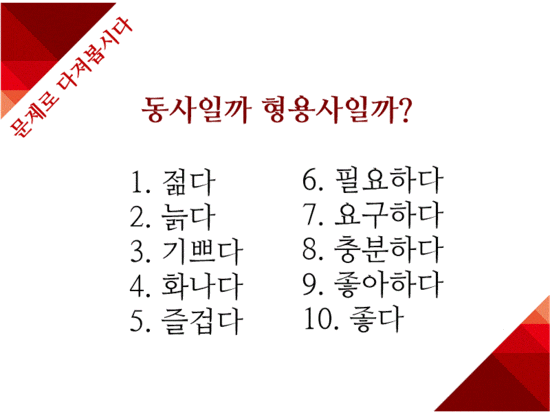


![pretty가 형용사인지 동사인지 헷갈리시는 분들 손! ✋ 형용사 동사의 차이 [고딸영문법] - YouTube Pretty가 형용사인지 동사인지 헷갈리시는 분들 손! ✋ 형용사 동사의 차이 [고딸영문법] - Youtube](https://i.ytimg.com/vi/pn_kP7nQAsE/maxresdefault.jpg)

![기초문법] 8품사와 문장성분 뿌시기 : 영어공부 블로그 기초문법] 8품사와 문장성분 뿌시기 : 영어공부 블로그](https://cdn.imweb.me/upload/S20201023c70d5019c4be8/01efba398f485.jpg)


![동사와 형용사 구분하기 [기초영어] - YouTube 동사와 형용사 구분하기 [기초영어] - Youtube](https://i.ytimg.com/vi/m3Wgyh5UPDg/mqdefault.jpg)
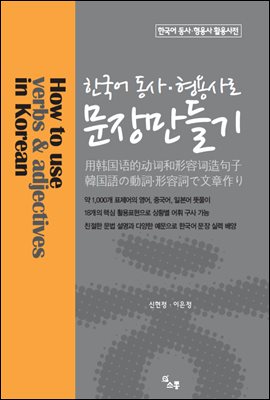



![국문법] 5. 품사 국문법] 5. 품사](https://t1.daumcdn.net/cfile/tistory/2549D7375710F9B321)
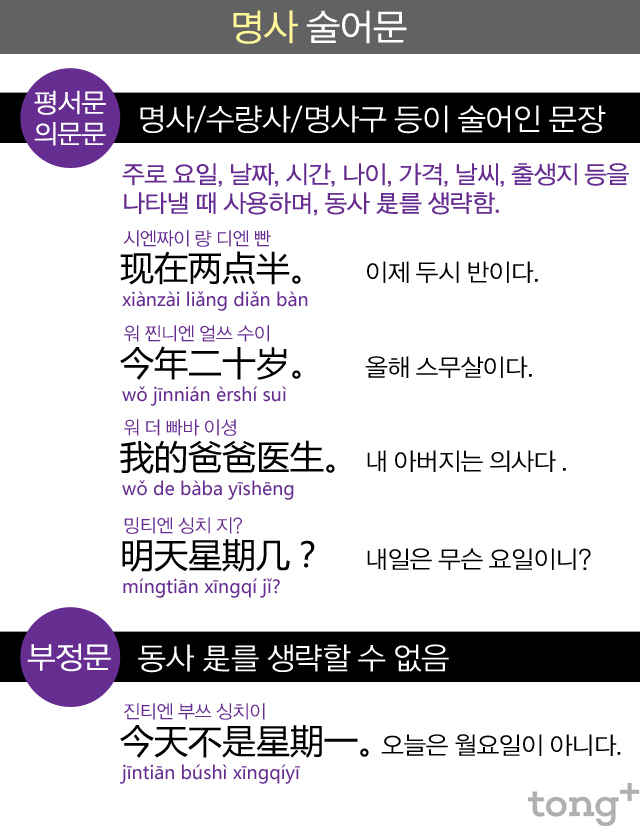


.gif)




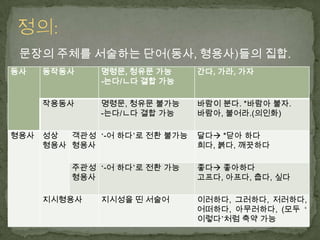
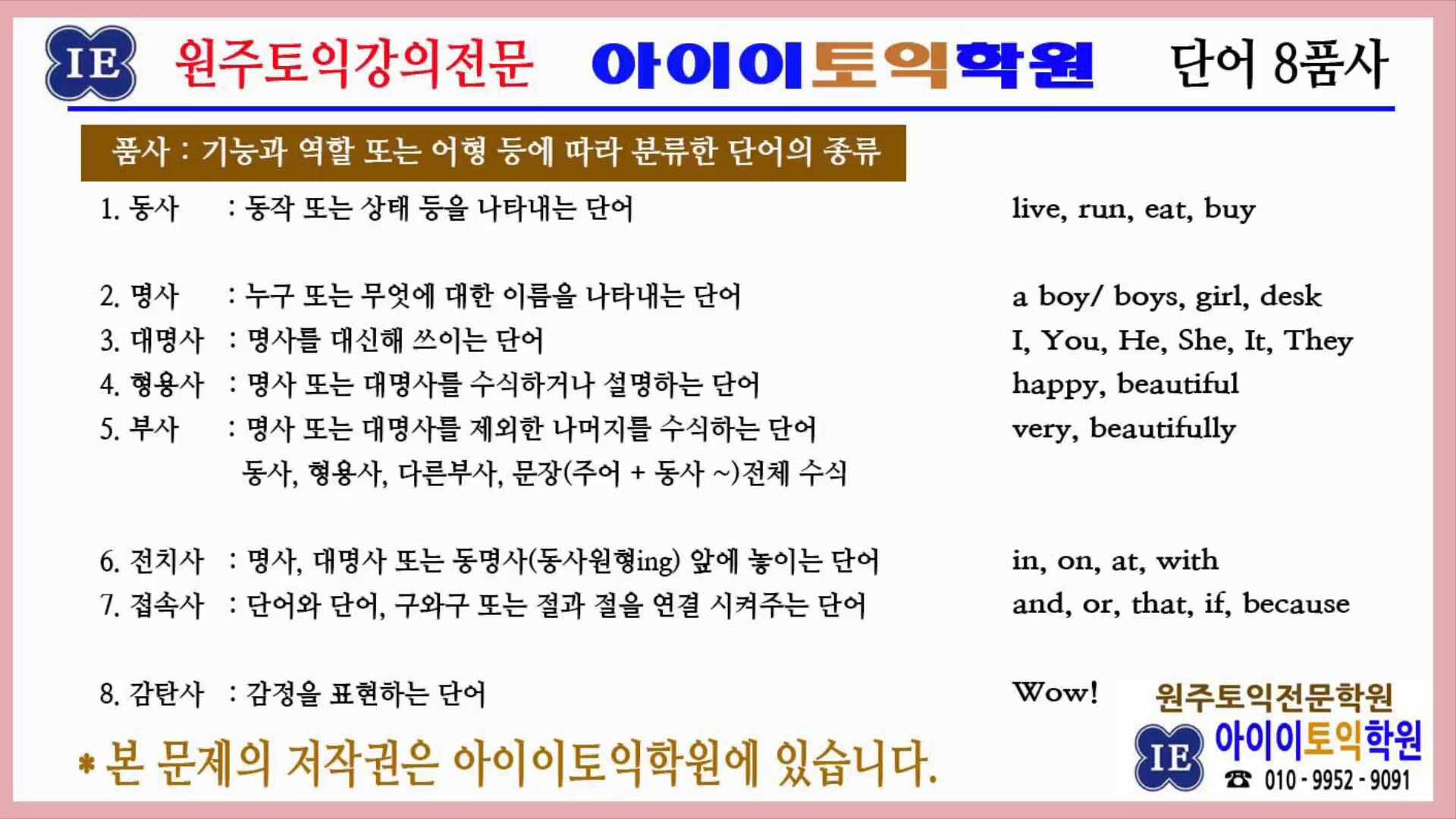

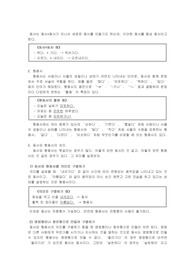
![06.[품사] 영어 단어의 성격 06.[품사] 영어 단어의 성격](https://img1.daumcdn.net/thumb/R1280x0.fpng/?fname=http://t1.daumcdn.net/brunch/service/user/e0VZ/image/toPhcclZtF8ekuj9wIejw-xcKYU.png)




Article link: 동사 형용사.
주제에 대해 자세히 알아보기 동사 형용사.